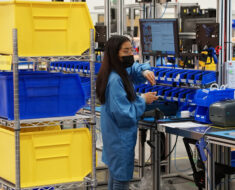
This is the first time that the term “high-growth tech nonprofit” has been used. Ten years ago, there were many tech organizations in existence. Some of these include Mozilla, DonorsChoose, Wikipedia, and Khan Academy. Like all tech nonprofits, these are using tech to solve market problems.
Ten years later, the tech nonprofit sector is much different. There are now over a thousand tech nonprofits that are tackling various social problems. As the sector’s rising stars transition from startup to grownup, we’re calling them high-growth tech nonprofits.
High-growth tech organizations are well-positioned to scale as they have proven their ability to solve market problems and are on the way to becoming self-sustaining. Unfortunately, there is a lack of support for these types of organizations from traditional funders. Instead of investing in technology solutions, traditional donors prefer to support more traditional nonprofit models.
The lack of familiarity between the traditional and tech sectors has also hindered the ability of tech nonprofits to scale. Both the traditional and tech sectors are missing out on the potential of these organizations.
The increasing number of philanthropists supporting high-growth tech nonprofits is a clear indication that the sector is poised to address some of the most critical social problems. They can make significant investments in these organizations by leveraging their multiple strategies, such as investing in large markets, leveraging tech ubiquity, and tapping into the tailwinds of the industry.
One of the most critical social problems that high-growth tech nonprofits are working on is climate change. Fossil-fuel energy usage is the main cause of climate change. According to a study, almost 25% of CO2 emissions are caused by electricity usage. However, not all electricity is created equally, and it is important to note that when it comes to producing electricity, devices that are powered by wind or solar energy can contribute to reducing emissions.
A product by WattTime called Automated Emissions Reduction is an algorithm that scans 27 countries’ power grids every five minutes to determine if dirty or clean electricity is available. It can then instruct devices such as those connected to the Internet of Things (IoT) to prioritize using clean energy.
Dil Bole Oberoi





